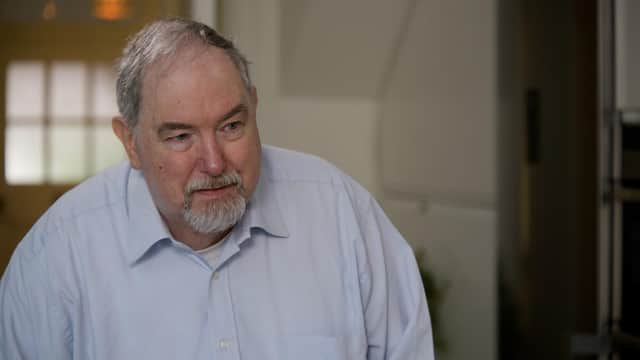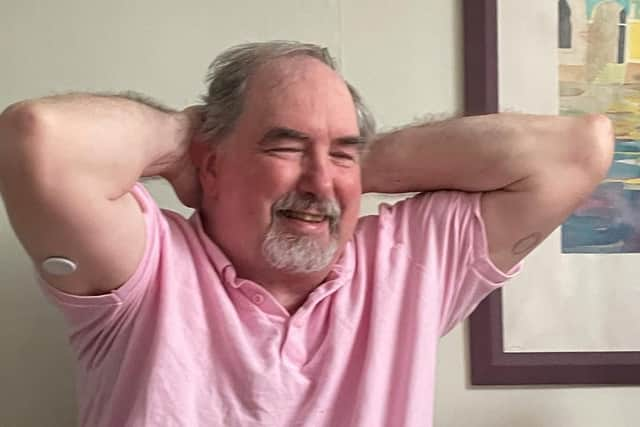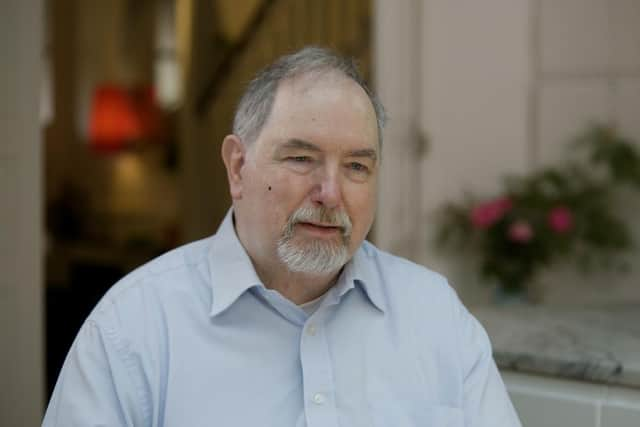Taking control of Type 2 diabetes – a glucose monitor like this could be the answer in Lancashire


Blackpool has one of the highest rates of diabetes in the country, with 8.6%(1) of residents living with the condition – the national average is estimated to be 7%.
But thanks to a recent change, glucose sensors are now available to more people living with diabetes– and their effects could be life-changing.
The National Institute for Health and Care Excellence (NICE) guidelines(2) recently changed so that glucose sensors are now available to people with type 2 diabetes who are administering multiple daily injections, need to test more than eight times a day or are unable to use finger prick tests.


The charity Diabetes UK, estimates the number of people living with the condition has now exceeded five million, and approximately 90% have type 2 diabetes(3).
This NICE ruling means people living within Lancashire and South Cumbria who are eligible, now have access to Abbott’s FreeStyle Libre system(4) to help manage type 2 diabetes.
The FreeStyle Libre 2 system gives people actionable insights, giving them real-time access to their glucose levels on their smartphone(5) so they can make more informed health decisions, leading to an improved quality of life.
Ken’s story


Ken was plagued by colds – at home, on holiday, all the time. No sooner did he get over one cold than another came along. Concerned, he visited his GP who, after running some tests, sent him to a diabetic clinic where he was told he had type 2 diabetes.
“I was in a state of shock”, said Ken. “All I could think about was what my future would look like now and what I’d have to do.”
For 22 years Ken had to rely on the finger prick method to test his blood sugar levels.
He explained that it would tell him a figure – too high and he injected with insulin and too low, he would eat or drink some carbohydrates to balance it back to a manageable level.
But, it didn’t give him an ongoing idea of what was going on in his body and it meant having three or more injections per day to try to keep a balance – no mean feat as he juggled his job as a Management Consultant between Edinburgh and London.
Ken, now a FreeStyle Libre ambassador, said: “The trouble was, I didn’t know if the reading was going up or down or staying the same. It was pure guesswork, so I made the decision to find out about Abbott’s FreeStyle Libre system.”
For 16 weeks, Ken self-funded his use of the device which, at the time, wasn’t available via the NHS for people living with type 2 diabetes, and only to some with type 1 diabetes.
Ken said: “For the first time in my life with diabetes, I could see what was happening in my body. How the food I ate and exercise I did would affect my glucose levels, helping me manage my diabetes 24/7, 365 days a year.”
Neil Harris, general manager for Abbott’s diabetes care business in the UK and Ireland, said: “Those living with type 1 diabetes have benefitted from Abbott’s FreeStyle Libre system for almost a decade, and it is good to see people with type 2 diabetes also enjoying the benefits of the technology to support their diabetes management, by giving them actionable insights so they can make informed decisions about food and lifestyle and other factors that impact glucose levels.
“The FreeStyle Libre system is the most widely used CGM system worldwide(6) helping more than five million people(7) living with diabetes across more than 60 countries to easily monitor their glucose levels(8).
“We are committed to broadening access to sensing technology for the millions of people with diabetes who could benefit from taking back control.”
Ken said: “I compare diabetes treatment to driving through London. For example, if you are on oral medications, it’s like doing so with a blindfold.
“If you use finger pricking, it’s like driving with a blindfold but occasionally being able to see where you are going. Using Abbott’s FreeStyle Libre 2 sensor is like taking the blindfold off and using a SATNAV to clearly see the road ahead.
“You can’t fix what you can’t measure – it’s the only way to put yourself back in that driving seat.”
To try the FreeStyle Libre 2 system for free, visit www.freestyle.abbott/uk-en/getting-started/sampling
1. https://www.lancashire.gov.uk/lancashire-insight/health-and-care/health/long-term-conditions/diabetes/#:~:text=Key findings, similar to England (7.3%).
3. https://www.diabetes.org.uk/about_us/news/number-people-living-diabetes-uk-tops-5-million-first-time
5. Glucose readings are automatically displayed in the FreeStyle LibreLink app only when your smartphone and sensor are connected and in range. The FreeStyle LibreLink app is only compatible with certain mobile devices and operating systems. Please check the website for more information about device compatibility before using the app. Use of FreeStyle LibreLink may require registration with LibreView.
6. Data on file, Abbott Diabetes Care, Inc. Based on the number of users worldwide for the FreeStyle Libre portfolio compared to the number of users for other leading personal use sensor-based glucose monitoring systems.
7. Data on file at Abbott Diabetes Care
8. Haak, T. Diabetes Therapy (2017): https://doi.org/10.1007/ s133300 - 016 - 0223 - 6ADC-84778 (v1.0) 11/2023
Disclaimer: The information provided is not intended to be used for medical diagnosis or treatment. Please consult your healthcare professional about your diabetes management. Individual symptoms, situations and circumstances may vary.